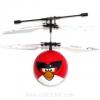- 1 reply
- 1,573 views
- Add Reply
- 0 replies
- 1,264 views
- Add Reply
- 7 replies
- 7,046 views
- Add Reply
- 1 reply
- 1,674 views
- Add Reply
- 2 replies
- 1,554 views
- Add Reply
GlobalMapper 21.1 WFS GML problem
By Capricorn,
Hi people,
When I connect to a WFS from GlobalMapper 21.1, a GML file with swapped coordinates is downloaded (northing-easting) and GlobalMapper reads these coordinates as they are easting-northing. Is there any workaround for this?
ArcMap reads this WFS normally using Interoperability Extension without telling SRS axis order. GlobalMapper doesn't have any option to chose SRS axis order.
U-blox technology platforms support BeiDou-3

By Lurker,


Current u-blox GNSS platforms — from u-blox M8 and beyond — support the recently completed BeiDou navigation satellite system modernizations, improving the availability of GNSS positioning services.
The opening ceremony of the BeiDou-3 global navigation satellite system (GNSS) was held in Beijing on July 31, officially celebrating the expansion of coverage offered by the critical Chinese space infrastructure to a global user base.
As a global supplier of GNSS positioning and wireless c
arcgis pro or arcmap?

By intertronic,
hello everyone,
I'm a long time user of arcmap and already two years ago on my computer I installed arcgis pro... now I don't know for you but I'm postponing for years the real switch between versions and I'm still on arcmap...
this because it seems to me that even if the expectations were very high, arcgis pro still doesn't seem to have that much declaimed performance. In particular, I'm concerned about the fact that for every little thing, it starts a geoprocessing that lasts between s
Introducing ArcGIS Living Atlas Indicators of the Planet

By Lurker,


It was just announced that June was the 3rd hottest on record, Johns Hopkins put the number of COVID-19 cases at 13-million, and over 300,000 sq km of protected areas were created last month. These are all indicators of the planet’s vitality, but traditionally you’d need to bookmark three different websites to keep track of these and other metrics.
In partnership with Microsoft, National Geographic, and the United Nations Sustainable Development Solutions Network, Esri is gathe
Mapping the Causes of Mangrove Loss

By Lurker,


A joint NASA-USGS initiative has created the first worldwide map of the causes of change in mangrove habitats between 2000 and 2016. Mangrove trees can be found growing in the salty mud along the Earth’s tropical and subtropical coastlines. Mangroves are vital to aquatic ecosystems due to their ability to prevent soil erosion and store carbon. Mangroves also provide critical habitat to multiple marine species such as algae, barnacles, oysters, sponges, shrimp, crabs, and lobsters.
Mangroves
-
Forum Statistics
8.8k
Total Topics43.5k
Total Posts



